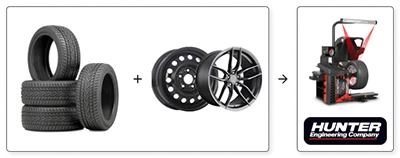Tips and Tire List for Reducing Winter Fuel Consumption

Winter means cold, snow and ice in many Canadian cities. The use of heaters, rear defrosters, heated seats and mirrors, and the windshield washer pump forces the car's engine to work harder. Colder temperatures make automotive fluids more viscous, requiring more energy and fuel.
Weather is a significant issue in winter; unfortunately, some days are more complicated than others on the roads.
Driving in freezing rain or snow increases rolling resistance. It is surprising how the tires absorb much extra energy to move the snow or slush when the road is unclear.
It is difficult to mitigate this inefficiency by taking an alternate route or trying to avoid travel when the snow has accumulated on the roads and waiting for them to clear. Now, thanks to telecommuting, it may be possible to stay home, but you have to negotiate with co-workers!
Aerodynamics of vehicles
Unfortunately, another factor beyond our control is the wind. Wind resistance, especially on the highway, is much higher in the winter because cold air is denser than warm air. And in many parts of the country, the wind is stronger in the winter than during the rest of the year.
Thus, headwinds cause an additional penalty in fuel economy.
An important point to reduce fuel consumption in winter, keep your vehicule clear of snow and ice to maximize aerodynamic efficiency. Foam snow brushes with rotating heads are incredible for removing snow from the roof, windows, hood and trunk, and they won't scratch the paint.
You don't need to idle the engine
The engine should not warm up for more than 30 seconds during the winter season. An engine that idles for more than 10 seconds uses more fuel than it takes to restart it.
At idle, an engine can consume between 1.1 and 4 liters per hour. Note that your vehicle will warm up much faster if you drive slowly.
Heated seats
Heated seats consume electricity generated by burning fuel, so they reduce your vehicle's range a bit.
Of course, this is a calculation of comfort versus fuel consumption on your part.
Tire pressure
Checking tire pressure regularly becomes even more critical when it gets cold. The pressure automatically decreases by 1 psi (or 1 PSI) every time the mercury drops by 6°C. If it was 10°C when you put on your winter tires in October, their pressure will have dropped by 5 PSI on a cold morning at -20°C!
According to a Government of Canada study on tire inflation, https://tc.canada.ca/fr/transport-routier/conduire-toute-securite/rouler-air at least one tire in every 10% of vehicles on the road in Canada is under-inflated by about 20%.
In addition to being a natural safety hazard, the life of an under-inflated tire can be reduced by 15,000 kilometers. Proper tire pressure ensures optimal traction and grip on any road surface and allows you to get more mileage out of your fuel, as an under-inflated tire can increase fuel consumption by up to 4%.
We recommend that you check the air pressure in your tires every month to ensure that they are always maintained at the pressure recommended by the vehicle manufacturer.
Electric vehicle
Here we are talking more about range than fuel economy!
In an electric vehicle, the heating of the passenger compartment effectively reduces the range in winter because the inefficiency of the engine cannot be exploited. Heat makes a very measurable difference for these vehicles, but heat pumps are becoming common and can reduce this penalty by 50% or more.
Prepare your vehicle if it is plugged in so that it is heated by the grid rather than the batteries. Heated seats are more effective in an EV than circulating heat, as you feel warmer in a heated seat than in warm air, which takes time to warm up the interior of the vehicle.
Winter tires that save fuel
Some winter tires are designed to significantly reduce friction and rolling resistance, two factors that affect the range of an electric vehicle or the fuel consumption of a combustion vehicle.
Winter tires have unique features that mitigate the risks associated with driving on snowy, icy and cold roads to allow for better control behind the wheel and increased safety.
Here is a list of winter tires that help reduce vehicle fuel consumption.


